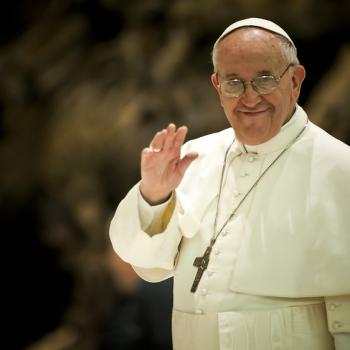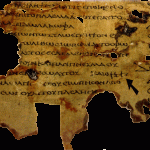What Does This Radical Group Believe About Vatican II, the New Mass, the Pontificate of Pope John Paul II, and the Indefectibility of the Church?* * * * *
This paper consists of critical commentary on particularly objectionable, questionable, and revealing portions of the following articles. All are connected with The Remnant organization.
* * * * *
TABLE OF CONTENTS
Introduction Dave Armstrong
My God, My God, What Did the Council Do? Fr. Charles Fiore
The Debate Between the Abbe de Nantes and Fr. Congar
THE NEW ORDO MISSÆ: A BATTLE ON TWO FRONTS the Abbe de Nantes
Appeal for an Ex-Cathedra Judgment on Vatican II Toni des Fresnes
THE ONE CATHOLIC MASS: ITS VALIDITY, LICEITY, AND BENEFIT the Abbe de Nantes
The New Mass Revisited Michael J. Matt
My Afterword Dave Armstrong
INTRODUCTION
The following does not purport to be an exhaustive critique (i.e., vigorously argued to the fullest extent that it could be argued, either by myself, or by others). I have neither the time nor energy for such an undertaking, having long since tired of “dialogues” with radical Catholic reactionaries (RadCathRs) and having learned firsthand that such efforts are usually perfectly futile. I have never claimed to be (nor wished to be) an expert on the minutiae and technicalities of Canon Law, or the intricacies of the ecclesiological arguments of St. Thomas Aquinas or St. Robert Bellarmine or Fr. Reginald Garrigou-Lagrange. I think all those things (and people) are wonderful (I am not in the least disparaging them), but I am unwilling to become an expert on such matters simply in order to express my own opinion of the shortcomings and radical inconsistencies of RadCathRism.
Neither Chesterton nor Belloc nor Muggeridge (all much-loved by RadCathRs and myself) were theologians, by any means, but that doesn’t stop Catholics from reading them and immensely benefiting from their insights (C.S. Lewis provides an analogous conservative Anglican example). I claim the same prerogatives as they – to comment on Catholic affairs even though not formally trained in theology, let alone specific areas of it, such as Canon Law. I am, however, a published Catholic apologist of long standing and much informal study, with nine years of active Protestant apologetics (largely consistent with Catholic theology, in my case, as I was neither a Calvinist nor an anti-Catholic) also behind me.
If The Remnant – a lay organization – feels competent and fully within its rights to routinely judge the pope and an Ecumenical Council (i.e., the very highest levels of Catholic magisterial authority), then I can certainly judge them (in the proper sense of discernment) and compare and contrast their views with Catholic orthodox theology and ecclesiology. It appears to me that the dynamic is precisely the same, in the sense of a layman’s duty and privileges. But of course they take it upon themselves to judge (and in effect, disobey) bishops and popes – their spiritual superiors; whereas I merely judge (in large part) fellow laymen, or priests who themselves are harshly or rashly judging their superiors.
So there can be no a priori objection to my undertaking, as if it were impermissible or unseemly. Furthermore, since The Remnant – like all advocacy groups (I speak from a sociological perspective for a moment), freely takes potshots at innumerable targets, it is only fair that their views be subjected to a little criticism as well. I wish I had more time and desire to do a more thorough job than I will be able to do, but circumstances have forced me to at least state my case – weak though it may be by certain criteria of argumentation or theological rigor. Such is life. Some effort is better than none at all. We can always do better (and being a compulsive perfectionist myself, how well I know that!), but we should at least do something, if we feel compelled to speak or act about an issue we deem important and worthwhile. Truth – if indeed it is truth – can be expressed by Balaam’s ass as well as by the most eloquent orator or scribe.
I do believe, at any rate, that there are clear and crucially important underlying principles at stake here which can be grasped by any reasonably catechized and faithful Catholic. I have compiled many dialogues and papers on the general subject, and my thoughts and numerous biblical, historical, philosophical, and analogical arguments are presented in great detail there, for all to see. Hence part of my reluctance to engage in the current critique – a lot of this is “old ground” for me, and I have expressed myself in many ways and repetitively on this matter.
The present endeavor is an effort to deny a claim (and a challenge) that The Remnant represents a perfectly acceptable and pious orthodox Catholic viewpoint. I take for granted that the vast majority of serious, committed, orthodox, magisterial Catholics will quickly recognize the impiety and imprudence – if not always technically heterodox nature – of the opinions which I document here (I know from sad personal experience that most professed RadCathRs will be little affected, let alone persuaded, by the following evidences).
I also hope to demonstrate, by means of brief but ongoing and hard-hitting commentary, that RadCathR logic (even in its “moderate” manifestations) is curiously and fatally self-contradictory, ironically exhibiting many of the same characteristics which it claims to decry in theological modernism and Protestantism, and in what it denigrates and despises as a compromised, so-called “conservative” Catholicism, allegedly in cahoots with (or at the least, blind to) the attempted modernist (or liberal, or “progressive”) crisis which has rocked the Church in recent years.
This self-contradiction and strong tendency towards the “slippery slope” is one reason why RadCathRism – by its own admission – suffers from the never-ending internal splits and conflicts typical of all schismatic and sectarian and heretical movements which operate on the false principle of private judgment. Thus they (including The Remnant) will severely criticize movements to their “right” (e.g., sedevacantists or the SSPX) – not seeing that their own underlying principles, premises, and presuppositions lead inexorably to such “further out” conclusions which are more consistent and coherent (albeit more distant from orthodoxy) than their own.
I should make it abundantly clear (for obvious reasons) that I (like the pope) have no problem whatsoever with a devotion to the Tridentine Mass, or traditional liturgical practice and devotion (not to mention traditional morality and catechesis). Quite the contrary: I myself have been a member, these last eight years, of an extremely traditional parish, which celebrates the Mass in Latin every Sunday. I utterly despise liturgical and aesthetic, architectural mediocrity and modernism. I was received into the Church by Fr. John A. Hardon – a theologian renowned for his impeccable orthodoxy even by many RadCathRs, and catechist for Mother Teresa’s Missionaries of Charity. He has formally recommended my writing. My website has been commended by Gerry Matatics. I strongly believe in Fatima, Lourdes, and the Rosary, and even fully accept the controversial proposed Marian definitions.
I have a particular devotion to Cardinal Newman and love Chesterton, Belloc and Knox, and the Fathers and Doctors of the Church. I am an old-earth creationist – one who has debated evolutionist scientists on my website. A rejection of contraception and an aversion to the events and philosophy of the Protestant Revolution were two of the major reasons I converted to Catholicism in 1990. The Remnant website itself has in the past even seen fit to link to no less than four of my web pages (as of 3 October 1999 – maybe not after this page. I have had my Newman-influenced appears!): St. Augustine and St. Thomas Aquinas, Medieval and Renaissance Culture, Malcolm Muggeridge, and my Sacred Scripture and Sacred Tradition page. My conversion story was published in The Latin Mass magazine also (Fall 1999).
Therefore, despite my strong, heartfelt, passionate disagreements with RadCathRs, indeed we have much in common, and nowhere (to my knowledge) do I say that they are not Catholics. When discussing these matters, I usually prefer the description of “schismatic spirit” as opposed to outright schismatic (excepting SSPX and sedevacantism). I speak of “un-Catholic” beliefs or principles, but not of “non-Catholics” – a crucial distinction to bear in mind.
In light of all of the above, it will be observed, I hope, that I possess no knee-jerk or merely temperamental or so-called “progressive” objection to a legitimate traditionalism per se. I have no agenda other than the pursuit of truth. I would deem myself a traditionalist in the proper sense of the term (i.e., simply an orthodox or magisterial Catholic).What I strongly deny as true and genuine is the RadCathR position that incorporates one or more of the following heterodox and un-Catholic propositions. I will stress these repeatedly in my critical comments:
1) That the Novus Ordo Mass is invalid or “objectively offensive to God.”
2) That the Second Vatican Ecumenical Council is qualitatively different from preceding Councils, or invalid, or intrinsically heretical (modernist), or shot-through with modernist “ambiguity,” or a corruption or “evolution” of received Catholic dogma – as opposed to a consistent (Newmanian and Vincentian and Thomistic) development — so that it is not binding on Catholics, and may be routinely opposed, and not obeyed.
3) That Vatican II is the root and central cause of the present modernist crisis (as opposed to the machinations of theological liberals and heterodox, who “hijacked” or “co-opted,” distorted and twisted the orthodox, papally-approved Council for their own wicked ends).
4) That the pontificates of John XXIII, Paul VI, and John Paul II are qualitatively different from those preceding them, or that they have knowingly (or even unknowingly, as dupes) presided over the destruction of the traditional Catholic Faith, passed down from the Apostles, or that they are material or formal heretics.
5) That (authentic Catholic) ecumenism, or the notion of religious liberty, or salvation outside the Church, properly understood in light of Sacred Tradition — as promulgated and developed especially by Vatican II — are radical innovations not present at least in kernel form in previous received apostolic Catholic Tradition.
6) That the Catholic Church could ever institutionally depart from the True Faith (defectibility). This includes conspiratorial notions that the Church could ever be substantially and institutionally overthrown by movements such as Freemasonry, the New World Order, Radical Secularism or Humanism, Enlightenment philosophies, Protestantizing elements, etc.
The following excerpts are clearly thought to be altogether acceptable and in accord with the general outlook of The Remnant (assuming that its creators maintain the usual editorial responsibility and vigilance). The words of members or contributors to The Remnant will be in blue. My critical comments will be in black.
My God, My God, What Did the Council Do?
A Review of In The Murky Waters of Vatican II By Atila Sinke Guimaraes
Father Charles Fiore
. . . And how did the Council “subvert,” and instigate the “auto-demolition” of the Church’s Magisterium . . . ?
“Auto-demolition” is a favorite Remnant expression for the alleged institutional demise of the Church. Yet do they apply this term to any other troubled period of Church history, I wonder? Since the Church always revived itself from very deep pits of decadence and heretical outbreaks in the past, according to the principle of indefectibility and the guidance of the Holy Spirit, it obviously would make no sense to do so. But as the people constituting the so-called remnant apparently aren’t sure of the outcome of this crisis, seemingly lacking faith in God’s designs in the worst of circumstances (we call that Providence and Sovereignty in theology), they utilize a phrase which would be patently ludicrous in other historical circumstances. Malcolm Muggeridge spoke of “The Great Liberal Death Wish.” I guess the folks at The Remnant believe that Christ’s own Church – His Body – is rapidly committing suicide as well. How sad . . .
. . . In a word, the “fathers” of the Council and their collaborators deliberately chose to conceal the lack of conformity of key Council documents with the Magisterium by means of their ambiguity, i.e., by use of language that is philosophically inexact, by appeals to the “findings of modern and contemporary social sciences,” and synchronicity with “the modern world,” . . .
This is a classic tactic of the RadCathR mindset: to posit a deliberate “ambiguity” in the Council, according to conspiratorial scenarios and the devious designs of the liberals. No informed, orthodox Catholic I know will deny that the modernists had insidious designs, or at least dangerously false beliefs sincerely-held (heresy is always with us – bishops and theologians not being immune to it). What we assert is that heresy can never subvert an Ecumenical Council, ratified by a pope. God simply won’t let that happen. This is a tenet of faith, and is part and parcel of Catholic ecclesiology. RadCathRs don’t talk in this fashion about any other Ecumenical Council. They single this one out, even though its validity and legitimacy is based on precisely the same criteria as all the others (in fact, I believe it had the greatest number of bishops present, by far). Knowing this, they adopt the equivocating, hair-splitting scenario of “ambiguous but not technically heterodox.”
Nice try . . . This is clearly rationalization and special pleading which allows no rational response, as it is so nebulous and subjective by its very nature. If one points out that such-and-such a doctrine can be shown to have an orthodox pedigree and consistent development, the RadCathR simply replies that the Council conspirators placed ambiguous language in it, in order for it to be subverted later. In other words, their cynical interpretation is always the “winner” because they have this simplistic and easy sleight-of-hand of “ambiguity” always ready and at their disposal. But the only reasonable way to determine orthodoxy is to simply look at the conciliar words (and those of previous Councils) themselves (which – strangely enough – these scathing critiques rarely take the time to do). Actual words are objective tools, just as one engages in exegesis and cross-referencing when interpreting Sacred Scripture.
As always, the RadCathR wants to have it both ways, and adopts a fortress mentality whereby any challenger to the self-proclaimed “orthodoxy” is automatically written off as a modernist, or modernist dupe, and patronized as a “conservative,” simply because we don’t play the game in this irrational, Alice in Wonderland fashion, where words – like a wax nose – can always be shaped according to the skeptical whims of the anti-conciliar party line. And that is one of the more striking instances of irony in this whole debate: criticizing alleged all-encompassing “ambiguity” in the Council, they hypocritically become far more truly ambiguous in the logic-torturing and circular theories they invent in order to bolster their own preconceived notions. I have noted this on many occasions in my Internet debates.
. . . the radical departure of the Second Vatican Council from the tradition that preceded and, indeed, should have anchored it. For example, Chapter Seven explains the “doctrine” that underlies the ambiguity, i.e., that a “hesitating” theology is normal, the Church is part of evolution, and so is semper reformanda—always in need of reform . . .
This section is rich in error. First of all, it is simply assumed that the teaching of Vatican II is a departure (i.e., corruption), rather than a Newmanian development of previous dogma and theology. This is by no means proven – much as RadCathRs casually assume. I have plenty of material and links even on my own website which demonstrate that the so-called “evolved” or “novel” doctrines can be synthesized and harmonized with traditional Catholic dogma. Apparently, many RadCathRs have never read (or didn’t understand, if they did), John Henry Newman’s Essay on the Development of Christian Doctrine. There, the great and Venerable Cardinal lays out the principles which distinguish a legitimate development from a corruption. If no seeds whatever could be found in ancient Church history for the emphases of Vatican II, a case might be made, but in fact, much can be found in the present instance (there aren’t many explicit seeds for the Assumption of the Blessed Virgin, or the Immaculate Conception, or Original Sin, either).
The Debate Between the Abbe de Nantes and Fr. Congar
AT ANNECY, ON 8 FEBRUARY 1977. From chapter 11 of the book For The Church by Brother Francis of Mary of the Angels, CRC. . . .
. . . Abbe de Nantes: Ah well, for my part, it is my absolute certitude that the Council as a whole is in the process of delivering the Church to the world, making our children lose the faith, and multiplying scandals. . . .
No mincing of words here! The Council is literally an instrument of the devil. This is not, and cannot be, Catholicism. I would have known this even as a Protestant.
. . . “Whether he wishes it or not”, the Abbe de Nantes will conclude, “the father of the Fathers of the Council [Fr. Congar] will always be nonplussed when confronted with our two theses: 1. The Second Vatican Council contains no infallible teaching.
This is as complete a reversal of the traditional understanding of Ecumenical Councils, as could possibly occur. I suppose the Abbe de Nantes will also say that it shouldn’t be obeyed in the least, either? No one asserts that the Council contained ex cathedra proclamations. Perhaps that is what is meant here. But Fr. Congar, in the debate, freely admitted that (as it is clearly true).
2. On the other hand, it contains novelties that have been infallibly condemned as insanity and heresy right up to our own times. It is on these bases that we remain impregnable, demanding ‘Truth and Justice whatever it may cost’.”
This is an explicit belief in the defectibility of the Church, as far as I am concerned. He even dispenses (refreshingly) with the specious pretense of “ambiguity.” I condemn this opinion unequivocally, as it is against the clear teaching of the Magisterium and Catholic Tradition. As I mentioned previously, the principle of indefectibility is upheld by The Remnant as one of its core beliefs, and Michael Davies defends it on the site, yet the Abbe de Nantes is clearly also a pivotal, influential figure among those who write for the website; not that such glaring internal contradictions among RadCathRs ever surprise me. I am well-used to them. One expects such things to be routinely and blithely accepted, just as one expects Protestant sects to contradict each other, and hardly even care, after a certain point. It amounts to institutionalized theological relativism and ecclesiological chaos. The important thing among all these “true believers” is for them to know what they are against. That is sufficient for inclusion into the club. “My enemy’s enemy is my friend.” The same dynamic also applies to anti-Catholics in all their various nefarious manifestations. Some Fundamentalists are even willing to absurdly embrace the Albigensian Gnostics, in the attempt to claim a pedigree apart from the Catholic lineage.
THE NEW “ORDO MISSAE”: A BATTLE ON TWO FRONTS
the Abbe de Nantes
. . . For myself, I was absorbed by the doctrinal combat, by the denunciation of the grave falsifications of the faith which the Council and the Pope, followed by so many books, particularly the new catechisms, had introduced and spread throughout the Church with their authentic magisterium. . . .
More defectibility. If the Council and popes are positively promulgating “grave” heretical error, then surely the Satanic conspiracy to overthrow the Church is complete.
Appeal for an Ex-Cathedra Judgment on Vatican II
Toni des Fresnes
The Remnant website exclaims about this article: “Toni des Fresnes here gives a “snapshot” view of the Abbe de Nantes’ critique of Conciliar theology and his most profound proposal for a way out of the most dramatic impasse of our time. Perhaps the most important article you will read this year!”
. . . we are perfectly free to repudiate a counterfeit doctrine, which is represented as “infallible”, but is nevertheless alien to the authentic traditional Magisterium.
Indeed; you can get consistent and leave the Church, if you are so convinced things are this desperate and hopeless.
Indeed, we have the duty to recognize, resist and reject any such falsehood.
As I reject yours . . .
. . . The source of this new religion, masquerading as “Catholic”, must be permanently removed, in order for true Catholicism to grow in the future and to flourish once more.
As clear and unambiguous a statement as any by non-SSPX, non-sedevacantist RadCathRs (and glowingly, ludicrously espoused by The Remnant website editors) of defectibility (“new religion”), and Vatican II as the “source” of virtually all ills and heresy in the Church.
We might argue that our present woes began long before the Council.
Yes; I would argue that they go back to the Fall of Adam and Eve, and with them, the human race . . . .
But the fact remains that without Vatican II the auto-demolition of our Faith and our Church could not have been implemented.
There’s that curious term “auto-demolition” again . . . I wonder if the author nevertheless regards Vatican II as “valid”?
This unprecedented “pastoral” Council was by no means infallible in all its teachings. In contrast to Vatican II, the previous twenty valid ecumenical Councils of the Church held over the past nineteen centuries, were all dogmatic and therefore infallible: containing no trace of error in their texts, teachings and penalties.
I fail to comprehend by what intellectual gymnastics such a remarkable conclusion can be made. I stand by Cardinal Ratzinger’s comment above.
. . . Indeed, it is high time for Vatican II to be re-visited and judged, with its errors exposed and condemned. How and by whom? Only a Pope or a Pope-in-Council can judge the Second Vatican Council and its legacy, the cult of man.
The time for that was at the close of the Council, when Pope Paul VI had the duty and prerogative of “vetoing” any questionable documents (as Leo the Great did with regard to the famous 28th Canon of Chalcedon). But he did not. This is how the Catholic Church operates. There is no such thing as going back to an Ecumenical Council 30 or more years later, and “deleting the whole thing from the record,” so to speak. This is impossible, both from the nature of things, and because it would constitute a glaring contradiction between one pope and another. One could, however, adopt Luther’s position of being totally willing to abandon any mere Council or papal decree (even an entire Christian Tradition), if his conscience so dictated. But of course that is Lutheranism, not Catholicism . . . Once again, RadCathRism betrays its latent Protestant affinities and sympathies . . .
Why has our Supreme Pontiff not used his Petrine power to clear up the appalling confusion perverting faith and morals throughout the Church today?
One could make a strong argument that he indeed has, but it seems as if nothing ever pleases RadCathRs.
Surely Rome is not blind to the fact that once the errors of the Council are vanquished and its “spirit” exorcised, the present apostasy or revolution in the Church will be finished?
One doesn’t get rid of the dirty bathwater by throwing out the baby . . .
It is unfortunate that Archbishop Marcel Lefebvre was deftly sidetracked into a liturgical dispute, apparently choreographed in Rome. If only he had invoked his episcopal right to a solemn judgment on the documented errors of Vatican II, he would have won a universal victory for the Faith (including of course, for the traditional Latin Mass). The very last thing Rome wanted was to be forced to deal with a legal ecclesiastical case which would publicize the theological flaws of the Council.. . .
This is priceless, in that it illustrates another suspicion of mine: that if you scratch a self-proclaimed RadCathR in communion with Rome, you get an SSPXer. If you scratch an SSPXer hard enough, you get a sedevacantist. Yet The Remnant website purportedly condemns both positions. Abp. Lefebvre as the sad, tragic, misunderstood hero-figure, and martyr for the noble cause of schism, rather than the disobedient excommunicate. A wistful reflection on “if only” . . .
. . . At the very least, an information campaign would certainly help Catholics, both religious and lay, to understand why we need to be released from the grip of Vatican II . . .
Why would a Catholic want to be “released” from the divinely-ordained Magisterium of the Church, for heaven’s sake? Nowhere does anyone show that the Council was invalid; therefore, we are all bound to it. There is no middle, “ambiguous” position.
. . . The bottom line here is that an infallible judgment will break the conciliar bonds which keep us hostage . . .
Pipe dreams . . . sheer silliness and Luther-like stupefaction as to the essential ecclesiology of the Church . . .
. . . Consequently a line from the Apocalypse comes to mind: “Who is like the beast, and who can fight against it?” (Ap. 13:4) Who then is capable of challenging Vatican II? . . .
I thank the author for this bit of honesty as well. Now Vatican II is compared to the very Beast of Revelation!! If it wasn’t so sad, it would be uproariously funny.
. . . The errors and ambiguities of Vatican II cannot be eradicated by trying to interpret them “in the light of tradition”, because the modernism animating this conciliar reformed religion contradicts previous papal teachings, the magisterium and in short, the Catholic Faith. . . .
A pitiable bit of entirely circular reasoning . . . In effect, no one is allowed to even begin such an endeavor, as it is clear from the outset that it is futile and doomed to failure. Very convenient . . .
. . . The Christian deposit of Faith remained non-negotiable to “reform” until the Protestant revolution. Yet our Catholic doctrine (in toto) was unassailed from within until Vatican II when, with immense pride and presumption, for the first time in the history of the Church a brand new set of beliefs was conjured up (without dogmatic authority) under the catch-phrase “renewal”. . . .
In other words, the Church was finally won over by the devil, and defected, contrary to Jesus Christ’s explicit promises. That would mean that, in turn, Jesus, our Lord and Savior, was a liar and a fraud, as Michael Davies implied in his truthful comments on the matter above.
. . . Vatican II was used as a springboard to jettison the past and to introduce a revolutionary philosophy for the “Pilgrim Church” on earth. The laity had their life blood injected with a batch of experimental, synthetic sera. After the Council closed in 1965 and based on its authority, everything was made new. The Classical Roman liturgy was suppressed and a new Mass was fabricated by a committee. The Sacraments were changed and rewritten. The Divine Office was constructed in a different format and divorced from Latin. A new Code of Canon Law was produced and an official new universal “Catechism” appeared. In fact, a whole new religion took shape. . . .
I’m beginning to think that verbal precision (not to mention logical rigor) is almost an afterthought or an irrelevancy in RadCathR rantings such as these. What is a rational person to do with an absolutely ridiculous phrase such as “a whole new religion”? I don’t know what to do with it – as I am normally accustomed to some semblance of reason in my opponents – , so I will desist, and leave it to others far more patient and longsuffering than I am.
. . . We recognize particularly Paul VI and John Paul II, in sympathy with Modernism, but nevertheless legitimate Popes. . . .
More face-saving equivocation . . .
. . . Obviously, the conciliar legacy is not merely watered-down Christianity, but an alien departure from what the Church has always taught for nineteen and a half centuries. The New (so-called) Catechism of the Catholic Church is riddled with the “old” faith being mixed up with the “new” ideology. . . .
More defectibility and what Cardinal Newman would call corruption.
. . . Vatican II not only ushered in a new religion, but a new way of governing the Church. The laity were empowered at the expense of downgrading the unique and sacred powers of the priesthood. . . .
Ditto.
. . . In Tertio Millennio Adveniente John Paul II claims: “During the Council, the Church, rediscovered episcopal collegiality”. This is not true. Collegiality was not “rediscovered” since this phenomenon never previously existed, even in Apostolic times. Collegiality was invented by Vatican II: designed to weaken the Petrine authority of Peter. Collegiality is a complete fabrication. . . .
Quite the contrary, it goes back to the first Church Council in the book of Acts (where Peter presided) and the scriptures about all the Apostles being given the power to “bind and loose” (again with Peter being preeminent, supreme, and unique – having been given the “keys to the kingdom of heaven” by Jesus, and called the “Rock” upon which the Church would be built). It is grounded in the very notion of a bishop. Otherwise, why have them at all? Just have a pope and a bunch of priests! From the beginning, the pope was head, but worked with the bishops, especially in Council. This is the uniqueness of solidly biblically based Catholic ecclesiology, in contradistinction to Orthodoxy and Anglicanism (Councils with no pope) or Protestantism (no Councils at all, excepting perhaps the first four given non-obligatory respect). Conciliarism over against the pope – the heresy of Gallicanism – is, of course, heretical, but that wasn’t what Vatican II proclaimed at all. It repeated virtually word-for-word the proclamation on papal infallibility from Vatican I, thus making the dogma even more certain (if indeed that can be said about a defined de fide dogma).
. . . The term “conciliarism” is used here to describe contemporary pseudo-Catholicism which, like a chimera, was unleashed by the Second Vatican Ecumenical Council. What then is the essence and purpose of the conciliar religion? As previously reviewed in some detail, the essence of conciliarism constitutes a body of evolving teachings, theology, doctrine and practice, which is contrary to authentic traditional Catholicism. And its purpose is to provide a vehicle, disguised under a Catholic veneer, to animate the realm of a New World Order. In a word, Conciliarism was crafted to serve as the Movement for the Spiritual Animation of Universal Democracy. . . .
Ah, so now we predictably enter the “anything-goes” world of conspiratorialism.
. . . As for “conservative” Catholicism, which helps to sustain the liberal monopoly of power by its vacillating apathy and antipathy towards Traditionalism, there is only this to say: “conservatives” stand for nothing and fall for everything, since they are “neither hot nor cold”.
That comes as news to me. I defy anyone to look over my blog and claim that I “stand for nothing and fall for everything.” I could no more do that than I could turn myself into the Loch Ness Monster. :-) The same holds for any number of fellow apologists, who don’t fall for RadCathR falsehoods and illogic, and the impious, schismatic spirit that it entails – clearly demonstrated above, time and again.
THE ONE CATHOLIC MASS: ITS VALIDITY, LICEITY, AND BENEFIT
the Abbe de Nantes, CRC Journal, April 1975.
[though he accepts the technical validity of the New Mass, nevertheless he writes:]
. . . As for us, we consider the Missal of Paul VI to be the work of men’s malice. Its definition of the Mass is perversely heretical, its inventions are copies of protestant rites, and its minor alterations are inspired by a doctrinal relativism and an infectious spiritual lethargy, which gradually poisons and misleads those who make use of it. Finally, it has given the green light to every kind of degradation of the sacred rites, even the very worst profanations. Such at least is our opinion, demonstrated, proclaimed, and never refuted.. . .
Yet another quintessential example of the typical RadCathR skeptical and cynical “distinction without a difference,” thus making it irrelevant and of no particular effect (as to the ultimate fruit of their beliefs) when they claim to uphold the validity of popes, Councils, and the New Mass, blah blah blah.
Michael J. Matt, editor, The Remnant
. . . the agenda undertaken by the revolutionaries in our own day and age who infiltrated (and determined the outcome of) the Second Vatican Council.
In other words, it is a heretic Council, which (amazingly enough) overcame the heretofore guaranteed guidance of the Holy Spirit, but that doesn’t mean it isn’t valid . . . (well, maybe it does, as we find out later in the article). Mr. Matt shows himself one of the more frank and consistent RadCathRs.
And what, after all, was the crowning achievement of Vatican II and its opprobrious “spirit” . . .
What do you call your spirit, I ask? I say it is the spirit of schism and disobedience and private judgment and the “pick-and-choose” cafeteria Catholic mentality – all suggesting a loss of faith in God and in Holy Mother Church, the Body of Christ.
. . . if not the attempted suppression of the venerable Tridentine Rite of the Catholic Church and the promulgation of a New Liturgy?
Who in his right mind would argue that the New Mass is anything other than the product of the same Modernist revolution, against which Pope St. Pius X warned the Church back in 1907? And, if we are to accept that the New Mass is the product of certain Modernist churchmen attempting to make the Church “more sympathetic to the tolerant spirit of the present age [by] relaxing its former strictness [and being] more indulgent toward modern views and methods,” then, in the spirit of Pascendi, is it not the duty of Catholics to “question” the New Mass with all the fervor with which we are obliged to “question” Modernism itself?
So you will have the guts and self-consistency to say it is invalid and a stench in God’s nostrils?
Modernism: wielding its capable battle weapons of the new Theology and false ecumenism (of which the New Mass is merely the natural outgrowth): is not merely a threat to the liturgical preferences of Catholics. No, it is a threat to the entire deposit of the Catholic Faith, to the physical and spiritual well-being of Christians, and indeed to the very foundation stones of civilized society itself. . . .
So has the Church defected yet (given all this melodramatic hysteria)? If not, why, and what will be the sign that it has? You can’t continue to play this game of talking out of both sides of your mouth.
. . . By definition, then, is not Traditional Catholicism fundamentally opposed to Modernism and all its works and pomps?
So you say, yet you and your fellow reactionaries continue to “identify with the oppressor” by adopting (consciously, willfully or not) so many of its tenets: selective espousal of Councils and papal decrees – even preconciliar papal teaching (e.g., they don’t like Humanae Vitae; you despise Ut Unum Sint – could they not argue that Paul VI was in error, just as you do?), private judgment, loss of faith, despairing of God’s promises, defectibility, hyper-rationalism, a disdain for true development and the mind of the Church, a Pharisaic, legalistic mentality and methodology, disobedience, laxity and compromise with regard to the dangers of errors to your “right,” inability to distinguish excesses from essence, insufficient understanding of causation, the schismatic and sectarian spirit, a marked lack of charity towards so-called “conservatives,” the Holy Father, other Christians, sinful judgmentalism and condescension, exaggerated self-importance (one might describe that as the prideful spirit), a spiritually unhealthy perpetual gloominess, suspiciousness, cynicism, and skepticism, etc. Orthodox Catholicism, on the other hand – such as what I am espousing, is thoroughly opposed to modernism, yet without hypocritically embracing so many of its tenets, yielding up an Ecumenical Council to the devil, and largely without all the other harmful tendencies and beliefs just outlined (we are sinners, too, of course, but we don’t institutionalize and formalize clear errors, as you do – “calling evil good,” in other words).
By laboring for the restoration of the Traditional Mass, do we not necessarily impugn the legitimacy of the New Mass?
Not necessarily. E.g., there are many Eastern Rites which have existed side-by-side with the Tridentine Liturgy for many hundreds of years (and the Church acknowledges the validity of Orthodox sacraments as well). We are not tied to one form and one form only. The essence of all valid Masses is the consecration and Real Presence and Sacrifice.
It would seem impossible to have it any other way.
Within the context of your schismatic mindset, of course this follows logically (and in fact), from the initial false premises, as I have been arguing all along, not only concerning the Novus Ordo, but also the recent popes and Vatican II, and the supremely important, presuppositional aspect of defectibility. So throughout this survey, the RadCathRs of The Remnant have (quite sadly) more than sufficiently confirmed all my worst suspicions and hypotheses about this harmful movement. The more I learn, the worse it gets . . .
I do not merely “prefer” the Tridentine Mass, I see it as the essential touchstone to the old Faith; I see its total restoration as the only hope for millions of souls in the modern world. The New Mass is fraudulent, but more importantly, the New Mass weakens the Faith of the faithful.
How does one prove such an amazing, subjective assertion? Simply because the crisis coincides in time with the New Mass? The fallacy of that “reasoning” is obvious. The height of the modernist crisis might be said to have been 1968, the very year that Humanae Vitae was promulgated. I assume that you accept that wonderful encyclical (perhaps not, as RadCathRs so despise Pope Paul VI). But by your own warped logic, the teaching against contraception must have caused the large scale disobedience of Catholics in this matter, since it coincided with it.
That which weakens Faith is injurious to Faith; therefore, the threat of the New Mass cannot be overlooked in our pursuit of the restoration of the Old Mass.
You continue to build upon your unproven premises – another troubling tendency of RadCathRs. So the alarmist rhetoric gets worse and worse, as with all conspiratorial schemes and theories trumped-up in order to explain things that people find themselves unable to comprehend or understand (therefore, they disobey and lose confidence in their ecclesiastical superiors). Like Job’s comforters, you fail to see that God is at work, mysterious and inexplicable as His ways continue to be. A little reading of Church history (the bleak periods) might do wonders.Catholics take the long view of history; they are not bound up by the fads and peculiarities and zeitgeist of any particular time period. This is one of the glories of the Church; one of the things that so attracted me to it.
According to a recent New York Times poll, seventy percent of young Catholics believe that the Blessed Sacrament is merely a symbolic reminder of the mission of Jesus Christ. The New Mass has led to this frightening crisis of Faith.
Of course this is completely unsubstantiated argumentation, and circular as well. I could just as well say (with far more justification) that the incessant Protestant and secularizing influence and incipient anti-traditionalism of our culture led to this demise in eucharistic faith. How do you know that the New Mass is the (sole?) cause? The fact is that you don’t know that. But since it is a convenient fallacy to incorporate within your overall worldview, you adopt it uncritically. But I consider it far worse to have an educated Catholic like yourself blatantly disobeying and disbelieving your Church, its Councils and popes, as compared to an ignorant, poorly-catechized Catholic who doesn’t understand or accept the Real Presence. “To whom much is given, much is required.”
Its effects on the faithful cannot be tolerated, and the New Mass itself cannot be allowed to enjoy equal status with the Traditional Mass of the ages. . . .
I could just as well say, “the effects of quasi-schismatic RadCathRism on the faithful cannot be tolerated, and disobedience and selective espousal cannot be allowed to enjoy equal status with the traditional faith of the ages in the indefectibility of the Church, and the infallibility and sublime authority of popes and Councils.” I regard your influence as equally dangerous as modernism, if not more so, because many of you have the outward appearance (and in many aspects and ways, the actuality) of being orthodox, devout, faithful Catholics, yet you spread (sincerely, I freely grant) this poison of skepticism and disbelief in Catholic authority – just as Luther and all the schismatics and heretics throughout history did.
The very fact that RadCathRs can masquerade as perfectly orthodox Catholics, makes them that much more dangerous, as all error has an element of truth in it, in order to deceive (I speak in the sense of diabolical spiritual warfare, not of conscious personal motives) the gullible and uninformed. Many Catholics can readily comprehend the folly and vapidity of modernist nonsense (when they truly see it in its ugly brazenness), but they cannot so quickly discern the errors of RadCathRism, which are far more subtle, complex, and, well (to use one of your favorite descriptions), “ambiguous.” And if you wonder why we so-called “conservatives” are so hard on you, then maybe that is an important clue or a hint. In a word, you should know better. We need your zeal, sincerity, RadCathRism (in the right sense of the word), and concern for liturgical purity and orthodoxy on our side, in the battle for pure orthodoxy and for the Church. As I wrote earlier (notwithstanding all my passionate disagreement), we have much in common, and I rejoice in all that.
Furthermore, schism has shown itself to be far more long-lasting historically, whereas heresies usually die out (completely or substantially). In that sense, one might say that schism poses a greater threat to the Church and to souls. If the pope, e.g., was to crack down on the American Catholic “church” with the full vigor RadCathRs (and mainstream “traditionalists” and many “conservatives”) call for, we can be sure that wholesale schism would result. I say that is a tragic eventuality to be avoided at all costs, as the harm to souls and the Church would be arguably far greater than that caused by the modernist crisis.
The pope is, therefore, between a rock and a hard place with regard to modernist dissent and domination of Catholic institutions such as seminaries, schools, and dioceses. Those who counsel a new Inquisition are much lacking in historical hindsight and prudential wisdom, in my opinion, which is odd, since they ought to know that modernists are every bit as devoted to their cause, and will fight tooth and nail to retain their worldly power and influence. This was all obvious after 1968 at the latest, when we saw the shocking organized resistance to Humanae Vitae.
. . . All of this cannot be considered accidental, or merely a diminishing of the tremendous benefits offered through the traditional liturgy. All of this constitutes an aggressive assault, waged by Modernists with the help of a weak and tragic Pope Paul VI (whom the Modernists dumped in the nearest gutter immediately after they were through with him),
If he was so weak, how, then, could he write the magnificent and heroic Humanae Vitae, against the majority advice of his own advisers – right in the face of the liberals? Nothing was ever so unfashionable as opposition to unrestrained sexual freedom, at that time. This heroic pope suffered “white martyrdom” if anyone ever did. And I happen to personally know one of his close advisers, so I have a little bit of inside information about that, beyond mere outward speculation.
against the sacred traditional liturgy of the Church. And, lex orandi, lex credendi (as we pray, so we believe) the Novus Ordo is just the external manifestation of the greatest crisis of Faith through which the Church has ever lived. It is not equal to the Traditional Mass “we prefer.” It is a travesty and valid or not it has become in so many cases a cruel mockery of the unbloody sacrifice of Calvary. . . .
This is another classic example of what I have repeatedly stressed: that the hostile attitude of the RadCathR towards Council, pope, and New Mass alike, transcends the technical, legalistic, canonical issue of validity. This is precisely why I continually stress the crucial underlying schismatic spirit, whereas RadCathRs like to maintain the pretense that “we accept the validity of the New Mass, and Vatican II, and the last four pontificates, so we’re not formal schismatics . . . ,” as if that solves all the problems of their fundamentally disobedient and Protestant- or modernist-like skepticism and disbelief in God’s guidance of the One True Church. So “valid or not,” (in other words, that matter is practically irrelevant), it is a “travesty” and a “cruel mockery.” I can easily rest my case at this point – having been spectacularly vindicated in every particular.
. . . Though I would never attempt to put myself in a position of dictating to others on a matter of conscience such as this one is,
Oh, of course not . . . Far be it from you to pontificate . . .
I still do not hesitate to admit that I will not attend the New Mass. I have made this commitment, not merely because I happen not to “prefer” the New Mass, but rather because it is a travesty its promulgation marks a break with Tradition. It has become in recent years especially a liturgical bow to Protestantism. I do not say it is invalid, because it is not my place to proclaim anything on a matter of such weight. I do, however, believe that it is injurious to the Catholic Faith, as history has clearly shown it to be in recent years. . . .
Another attempt to have it both ways, to be ambiguous and nebulous, just as Vatican II is accused of being. I find all this incredibly ironic and flat-out odd. But, as I just stated, validity is a moot point within the overall context of the radical skepticism and lack of faith (acceptance of quasi-defectibility or literal defection) of RadCathRs.
. . . I realize that the late Archbishop Lefebvre is no longer considered “politically correct” within “new Traditionalism,” but I remember a time when his words were taken seriously in the old days, even by those who did not support the 1988 consecrations. . . .
Yet another confirmation of what I stated above: viz., “laxity and compromise with regard to the dangers of errors to your ‘right.’ ” And, “if you scratch a self-proclaimed ‘traditionalist’ (RadCathR) in communion with Rome, you get an SSPXer. If you scratch an SSPXer hard enough, you get a sedevacantist.” Not a single harsh word is spoken about the brazen disobedience of Abp. Lefebvre – a direct defiance of the pope’s orders. Once one accepts the legitimacy of that premise, the hierarchical structure of the Church ultimately collapses (logically speaking). But no; as above in a previous excerpt, Abp. Lefebvre is clearly wistfully regarded as a “tragic hero,” a “martyr for the cause,” someone far more respected than repudiated as a formal schismatic (even though The Remnant ostensibly eschews the Society of St. Pius X [SSPX], founded by Lefebvre).
. . . Was that Mass invalid? It seems to us that that’s really beside the point.
Of course it is; we understand your schismatic and disobedient mentality very well by now . . .
The Faith is all but lost in the Novus Ordo church–only the COMMUNITY remains, and even that is dwindling rapidly.
A clear proclamation of the defectibility of the Church (thus making Jesus a liar and a fraud, as Michael Davies implied). It is only qualified (as usual, in ambiguous, modernist fashion) by the clause “all but.”
Becoming preoccupied with the validity question is a bit like a murderer worrying about whether or not he mixed his poisonous potion properly, even after his victim has fallen lifeless to the floor. Valid or not, the New Mass has been disastrous. The Faith is undergoing its own Black Plague, largely due to the Liturgical Revolution. . . .
Precisely – as I have been arguing. The only difference is that you only see modernism behind every tree and under every rock. I see not only the clear and present modernist threat and crisis, but also your schismatic spirit, wherein validity is “beside the point.” Funny, though, that RadCathRs always appeal to their belief in validity when their orthodoxy or communion with Rome is questioned by orthodox Catholics, such as myself. So it is “beside the point” in one context (i.e., in their internal soliloquies and jeremiads), yet quite to the point and essential as an indicator of Catholic legitimacy in another context (i.e., putting forth an “orthodox appearance” to the outside world). Thus, such a two-faced approach stinks of a sort of esotericism and elitism which is highly detrimental to the integrity and self-honesty of the movement qua movement, in my opinion. This is equivocation in the full, objectionable sense of the term.
. . . the Faith has survived despite the New Mass…but not because of it; . . .
. . . For most of us the threats of the New Mass are very real, again regardless of its validity. . . .
For those who use acceptance of “validity” as a barometer of the “non-aberrant” or “acceptable” nature of RadCathRism, take note. There’s much more here than meets the eye . . .
. . . Few would argue that the New Mass was formulated by Modernists. Therefore, Traditionalists are not out of line by “shunning” it altogether. We are content to let a future pope make a judgment on the validity (or lack thereof) of this strange Novus Ordo Missae;
Now agnosticism surfaces. The pope is enthusiastically obeyed insofar as he agrees with the RadCathR! Luther would have been very proud!
but, for us, it has become a serious threat to the integrity of the Holy Roman Catholic Faith.
And indeed this is the bottom line for you, once again revealing the belief in quasi-defectibility, when all is said and done.
Conclusion
In the interest of confounding the dictates of the latest heresy de jour “false ecumenism”
Here’s a question for you, which needs to be asked: what do you consider a true ecumenism? If there is no such thing, then why do you qualify the word? That would be like saying “avoid a false lust” or “don’t engage in false embezzlement.” The use of false, therefore, implies the existence of a true (authentic) ecumenism, as in my position.
Traditionalism, therefore, should insist on being defined by its respectful but total opposition to the New Mass,
Now we again descend into the surreal world of doubletalk. Every name in the book is hurled at the New Mass (e.g., “poisonous,” “injurious,” “cruel mockery”), yet we should be “respectful” towards it, in our noble opposition!
as well as by its “attachment” to the Old Mass. In this way, by demonstrating our willingness to stand against that which is injurious to the old Faith, our liturgical “preferences” will not be perceived by the modern world as mere consequences of nostalgia or selfishness, but rather will be seen as something which is fundamental to the Catholic Faith….Something worth sacrificing everything for indeed, something which is worth dying for, as it was in the cases of More, Campion, and Fisher.
I always grant sincerity of intention. I just think the whole outlook is tragically wrongheaded and quixotic in the extreme. Fight for liturgical reform (against abuses), sure (I have many links along those lines, and I wholeheartedly agree with that goal), but don’t make yourself ridiculous by all this hyper-dramatic language in the service of schism and defectibility. RadCathRism is sorely lacking in perspective and – oftentimes – plain common sense.
At least, this is how this stodgy, “old” Traditionalist sees it. Call it madness if you will, but it seems to me that this was the standard line among all Traditionalists before 1988. If “new” Traditionalism is exclusive of those of us who respectfully but unabashedly stress the doctrinal contradictions contained within Novus Ordo milieu, then it becomes apparent that there is yet another “remnant” forming a remnant that is kicking and clawing its way back to the “old” ways. . . .
Thanks (sincerely) for the historical overview and sociological analysis of the strains and fissures of your movement. And I predict that you won’t be around much longer. You sound like you are destined for the SSPX. The type of RadCathRist (note the absence of quotation marks) who rejects all six of the distinguishing marks of false RadCathRism, which I outlined near the beginning of this critique, is fine in my book. I have no beef with them whatsoever. This criticism is not at all directed towards them. I respect and admire them (I even admire the false RadCathRists in some respects). In fact, I would consider myself one of their number. I need to make that clear now and then, lest my outlook and intention be misunderstood or mischaracterized (as I fully expect it to be once this paper hits the Internet).
. . . If new Traditionalism cannot embrace those who will go to their graves decrying the serious errors of the Modernists and their coup d’etat: the Novus Ordo Mass: then so be it and here’s to the spirit of the “old Traditionalists.” May it live on forever, if only in a remnant. . . .
And one can see the potential seeds of yet another sect developing, out of this rhetoric. Such is the inevitable destiny of all who leave the Church, either formally, or in a perilously-close spirit of disobedience and “material” schism. “Old Catholics”; “Old RadCathRs“; “Old Believers” (self-described “traditional” Orthodox in Russia); “Old Order Amish”; “Old-Fashioned Fundamentalism.” Do I detect a pattern here? One keeps closing the circle of true believers tighter and tighter, until (theoretically) there could be ten people in the whole world who constitute the “Catholic Church.” That doesn’t sound like the One True, Universal, Catholic Church to me. The folly and falsity of this is obvious, but I guess that the lure of felt importance which comes with the self-understanding of being the “pure remnant” can overcome all Tradition and common sense.
I am fully willing to entertain debate and rebuttals to this (and publish on my site whatever portions I respond fully to – see link at the end of the paper), but I am not willing to get bogged down and sidetracked on this issue (per my expressed reservations and complaints in the Introduction), to the detriment and exclusion of many other ones which I deal with in the course of my apologetic writing and apostolate, primarily on the Internet. At least I am willing to interact with criticism (time- and energy-permitting) – unlike many out there in web-land and elsewhere. In fact, I have more dialogues with opponents on my website than any other site I have yet come across. These sad internal battles are most unfortunate and waste vital time and energy which could be devoted to prayer, evangelism, ecumenism, catechesis, social action, and other worthy Catholic pursuits.
Mainly, I am interested in direct replies and counter-replies to my arguments, as opposed to endless citations of obscure canon laws and letters, preaching, party line polemics and slogans, silly and vapid charges that I am a liberal, etc. I tend to approach things from a larger perspective – to look at the “big picture,” though I also love to examine premises, and to illustrate logical results by analogy and the use of the argumentum ad absurdum – as often above. Possible dialogical opponents may take heart in the fact that (due to my perfectionism) I almost always write way more than I intend to, and spend far more time than I originally wished, as evidenced by this paper! :-)
Terminology and categorizations revised on 14 August 2013.
* * * * *













